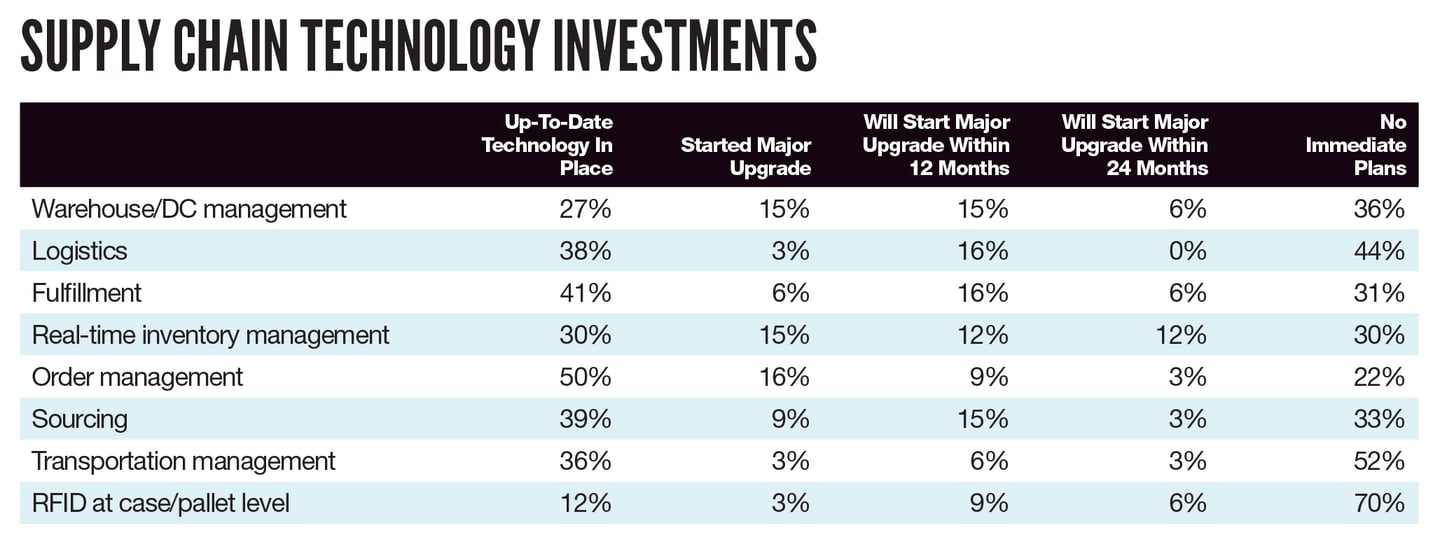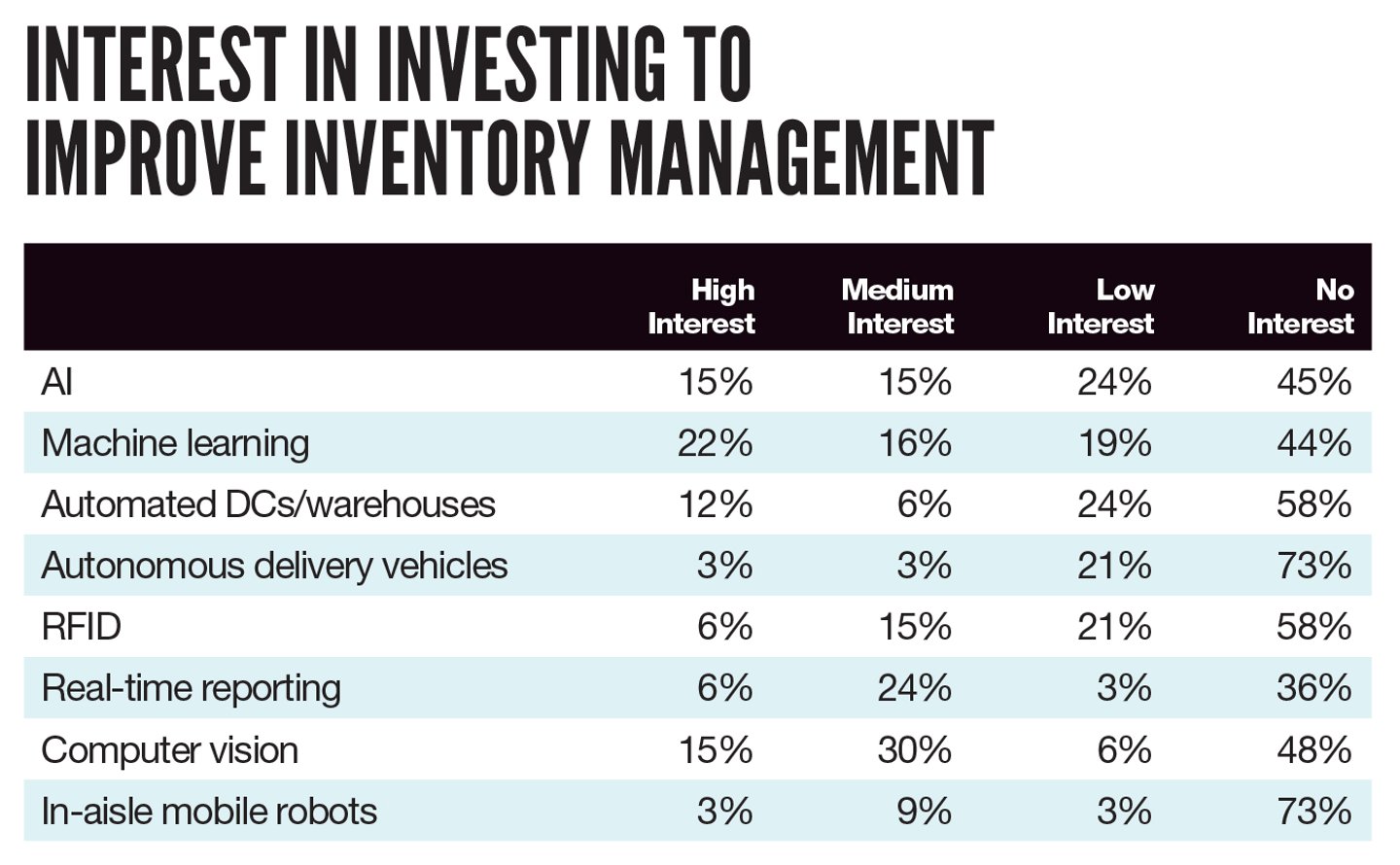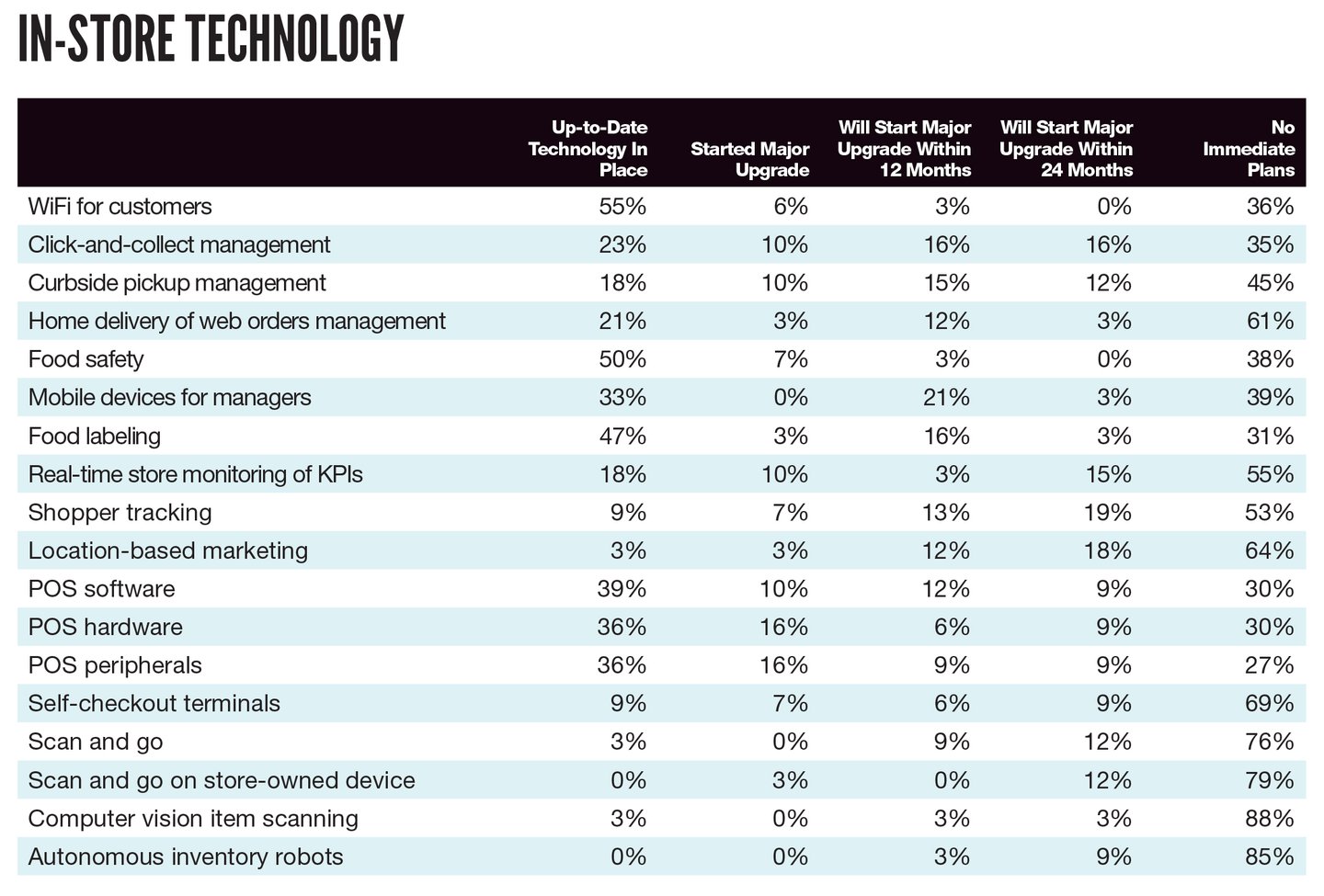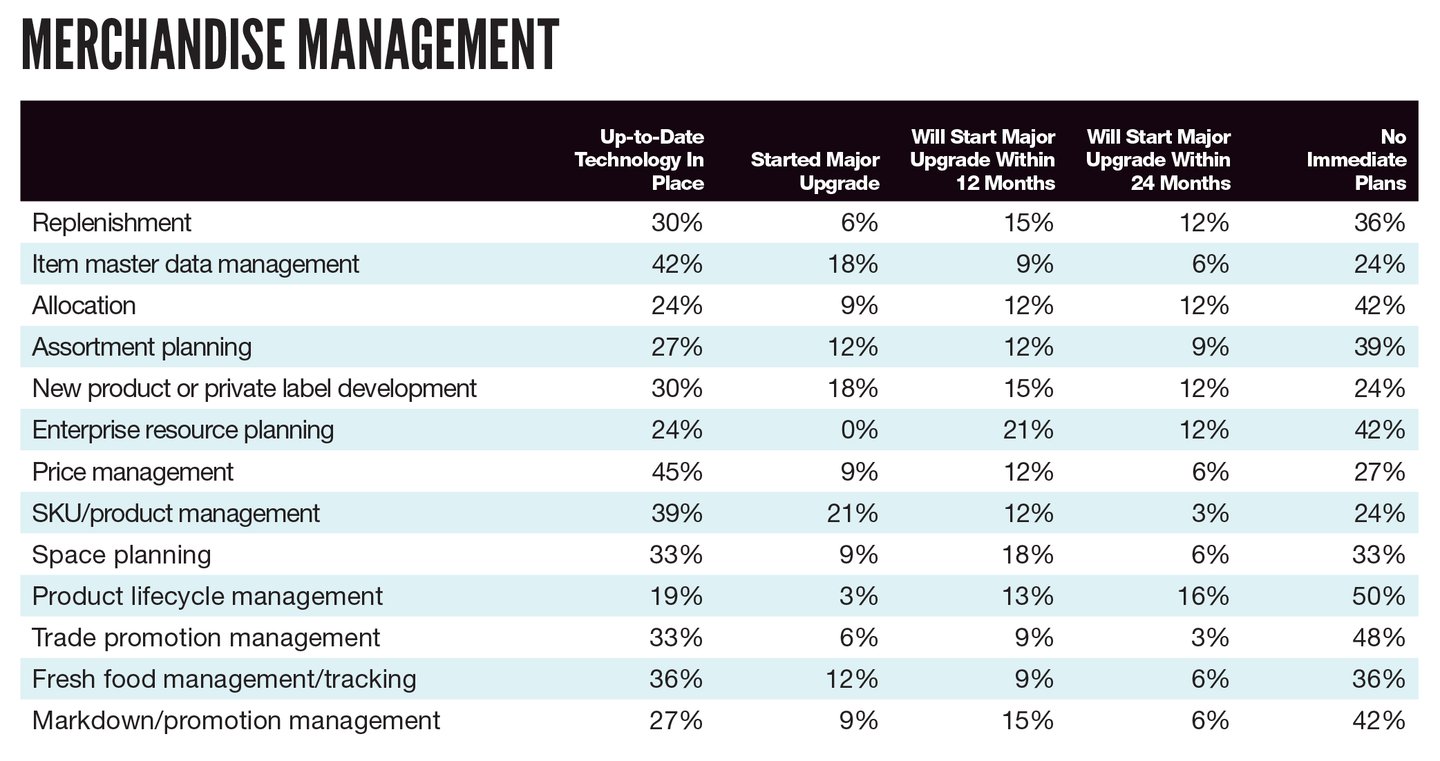6th Annual Grocery Tech Trends Study
Grocers are facing disruption around every corner as historic supply chain woes, a national labor shortage and the lingering effects of nearly two-year-old pandemic push operations to the limit. Despite this perfect storm of challenges, grocers continue to reinvent themselves and are investing heavily in the technology capabilities needed to operate efficiently amid dynamic market conditions to provide shoppers with safe, memorable and engaging customer experiences, whether in store or online. The 6th Annual Grocery Tech Trends Study, conducted by Progressive Grocer sister brand RIS News, explores these challenges and opportunities, and benchmarks the investment plans of more than 70 individual retail technologies.
Opportunities Born From Challenges
It’s certainly a demanding time for retail, and the grocery segment in particular. The obvious challenges brought on by the pandemic, coupled with supply chain and staffing issues, made 2021 a difficult year, and more disruption is on the horizon.
To pinpoint grocers’ top concerns, survey respondents were asked to identify their biggest business challenges from a list of predetermined options, while also sharing open-ended feedback.
Not surprisingly, considering the lack of workers willing to provide their services at current rates of pay, 74% of grocers report that the tight labor market is a major obstacle that will drive their retail technology investment over the next 18 months. The concerns about employees weren’t limited to labor competition, but also included engaging with current associates and providing a safe working environment.
In addition to labor worries, massive supply chain troubles are top of mind across the industry. The global supply chain is in crisis, with raw-material scarcities, closed ports, truck driver shortages and much more leading to front-page news. Obviously, grocers haven’t been immune to these crises, citing supply chain management, labor and inventory shortages, and keeping morale high as major challenges heading into the new year.
As every eternal optimist can attest, however, challenges often bring possibilities, and savvy grocers continue to invest in technology to drive their businesses forward and meet changing consumer demand. More than half (54%) of grocers are increasing their year-over-year tech spend, with a focus on advancing digital and mobile capabilities, analytics-driven decision-making, personalized marketing, and click-and-collect.
Supply Chain in Crisis
Grocery executives were asked to provide one word to describe the current state of the grocery segment. Among the most popular responses were “challenging,” “changing” and “evolving.”
Much of this ongoing uncertainty and evolution has been brought on by the supply chain woes that are disrupting nearly every industry. While many of these supply chain issues are beyond grocers’ control — think stranded cargo ships and port shutdowns — savvy operators realize that part of the inventory issues they’re experiencing could be lessened by investing in their current tech infrastructure. The most forward-thinking among them are doing just that.
Since the onset of the pandemic, grocers have been working diligently to improve their supply chain capabilities as well as their ability to accurately predict future demand.
Last year, grocers reported significant ongoing investment in transportation management, order management, fulfillment, logistics and sourcing. This commitment has paid off, and now more than a third of grocers report up-to-date technology in these critical areas.
Currently, grocers are focused on order management (16%), warehouse/DC management (15%) and real-time inventory management (15%), with plans to invest heavily in logistics (16%), fulfillment (16%) and warehouse/DC management (15%) over the next 12 months. While plenty of investment is ongoing and planned over the next year, when the timeline is stretched to 24 months, we see a big drop in overall investment allocation to the supply chain.
In retail, a successful supply chain can be evaluated with one simple question: Is product where it needs to be, when it needs to be there? Unfortunately, across the industry the answer has been a resounding “no.” We asked grocers to rank their interest in a select group of technologies designed to improve inventory accuracy, and the technology that received the most “high interest” was machine learning, at 22%, followed by computer vision, at 15%. The leaders in “medium interest” were computer vision (30%) and real-time reporting (24%).
Digital Shopping to the Rescue
While the deck has certainly been shuffled on the grocery industry, digital shopping has become the wild card that has helped many grocers turn a struggling hand into a pot winner. Survey respondents report that nearly a quarter (24%) of sales are now allocated to digital channels — this tally includes orders that were placed online, but the final transaction was conducted at the store level. This marks a significant increase year over year, with survey respondents reporting just 9% of total sales originating via digital channels last year.
Digital sales growth has increased in lockstep with customers’ omnichannel expectations, with 27% of grocers reporting that expectations have increased greatly, while an additional 52% report a slight increase.
To meet changing consumer attitudes, 21% of grocers are currently implementing new e-commerce platforms, with another 15% planning a similar enhancement over the next 12 months. In addition to investing in their e-commerce foundation, grocers plan to allocate capital expenditures to customer experience upgrades like product recommendations (21%), digital coupons (21%) and customer reviews (12%).
The Store Still Rules
While the store is still the center of the grocery universe, how it’s used is quickly pivoting. Over the next 12 months, a quarter of grocers plan major click-and-collect and curbside investments as they look to cater to consumers who prefer a contactless shopping experience.
In addition, grocers report a slew of point-of-sale (POS) investment over the next 12 months, with POS peripherals, software and hardware all receiving major overhauls at more than one out of five grocers. These upgrades will help grocers process contactless payment, execute click-and-collect orders, and allow for self-service checkout, among other additional functionality.
Part of the appeal of the in-person grocery shopping experience is the thrill of discovering new and exciting products that consumers might not have been aware of otherwise. Over the next 12 months, a third (33%) of grocers expect to invest in new product or private label development to not only keep their assortments fresh, but also increase margins by keeping profits in-house.
Of course, finding reliable workers to fill their shelves with these new products has proved to be a monumental undertaking. Grocers, like the entire service industry, have struggled to attract and retain hourly workers.
To bolster their workforce management capabilities, one in 10 grocers is currently deploying next-gen human resources, time and attendance, scheduling, training, task management, and compliance solutions to better connect with an increasingly fickle workforce.
Key Findings
- 54% of grocers are increasing their year-over-year tech spend, with a focus on advancing digital and mobile capabilities, analytics-driven decision-making, personalized marketing, and click-and-collect.
- One in five grocers plans major POS overhauls in the next 12 months, including software, hardware and peripherals.
- 74% of grocers report that the tight labor market is a major obstacle that will drive their retail technology investment over the next 18 months.
- Nearly a quarter of sales are allocated to digital channels — this tally includes orders that were placed online, but the final transactions were conducted at the store level.
- Grocers rank their interest in machine learning (22%) and computer vision (15%) as “high” as they look for ways to improve inventory accuracy.
- Consumer omnichannel expectations have increased greatly over the past year, according to 27% of grocers.
- 57% of grocers have experienced an increase in house-brand sales this year, bringing the total amount of revenue received from private label sales to 28%.
Who Took the Survey
This annual benchmark study of the grocery industry draws data primarily from regional and national chains. A quarter of the respondent pool is employed at grocers with more than 10 stores, and a third of the respondent pool boasts revenue north of $100 million.
Data was collected in August and September 2021 from respondents who hold executive positions within their companies that give them significant influence over technology strategy, project selection and budgets.
The overall grocery segment continues to expand at an impressive rate, with 75% of respondents reporting increased year-over-year revenue and 39% reporting an increase of greater than 5%.
























